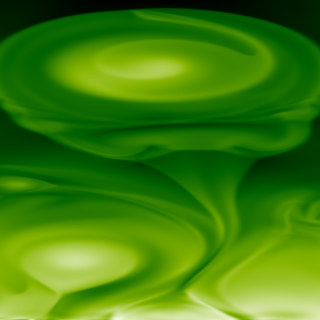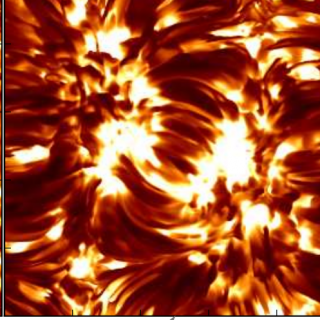Bibcode
de la Cruz Rodríguez, J.; Rouppe van der Voort, L.; Socas-Navarro, H.; van Noort, M.
Referencia bibliográfica
Astronomy and Astrophysics, Volume 556, id.A115, 15 pp.
Fecha de publicación:
8
2013
Revista
Número de citas
110
Número de citas referidas
101
Descripción
We present new high-resolution spectro-polarimetric Ca IIλ8542
observations of umbral flashes in sunspots. At nearly 0.18 arcsec, and
spanning about one hour of continuous observation, this is the most
detailed dataset published thus far. Our study involves both LTE and
non-LTE inversions (but includes also a weak field analysis as a sanity
check) to quantify temperatures, mass flows and the full magnetic field
vector geometry. We confirm earlier reports that UFs have very fine
structure with hot and cool material intermixed at sub-arcsecond scales.
The shock front is roughly 1000 K hotter than the surrounding material.
We do not observe significant fluctuations of the field in the umbra. In
the penumbra, however, the passage of the running penumbral waves alter
the magnetic field strength by some 200 G (peak-to-peak amplitude) but
it does not change the field orientation (at least not significantly
within our sensitivity of a few degrees). From a fast Fourier transform
analysis, we find a trend of decreasing power at high temporal
frequencies at those locations with more horizontal magnetic fields, for
the line-of-sight velocity and magnetic field strength. In the outer
penumbra we find an absence of high frequency power while there is
increasingly more power at high frequencies towards the umbra.
Movie and Appendices A and B are available in electronic form at http://www.aanda.org
Proyectos relacionados

Simulación Numérica de Procesos Astrofísicos
La simulación numérica mediante códigos complejos de ordenador es una herramienta fundamental en la investigación física y en la técnica desde hace décadas. El crecimiento vertiginoso de las capacidades informáticas junto con el avance notable de la matemática numérica ha hecho accesible a los centros de investigación de tamaño medio
Daniel Elías
Nóbrega Siverio

Magnetismo, Polarización y Transferencia Radiativa en Astrofísica
Los campos magnéticos están presentes en todos los plasmas astrofísicos y controlan la mayor parte de la variabilidad que se observa en el Universo a escalas temporales intermedias. Se encuentran en estrellas, a lo largo de todo el diagrama de Hertzsprung-Russell, en galaxias, e incluso quizás en el medio intergaláctico. La polarización de la luz
Ernest
Alsina Ballester